New modelling by the Energy Transitions Commission (ETC) finds that “Sunbelt” countries—including India, Mexico, and much of Africa—are best positioned to lower power system costs by transitioning to low-cost, solar-led energy systems.
“In the global sunbelt, the collapsing cost of solar PV and batteries makes possible far cheaper and more rapid growth in green electricity supply than seemed feasible ten years ago,” said Adair Turner, Chair of the Energy Transitions Commission.
Further, it is technically possible for wind and solar-dominant systems to be stable and resilient with the right mix of balancing and grid technologies, and that the systems are no more likely to experience blackouts than systems dominated by thermal generation.
According to the ETC, India could achieve clean power system at a cost (including generation, balancing, and grid infrastructure) of around $50/MWh by 2050—significantly below current fossil fuel-driven wholesale prices—by shifting to a fully wind and solar-based electricity system requiring primarily day-night balancing.
The modelling suggests that in such a system, solar would account for approximately 80% of installed capacity with the remainder 20% from wind. By 2050, this setup could generate around 7,300 TWh of electricity annually, comfortably meeting India’s projected demand of 5,500 TWh—more than triple the 2024 consumption of roughly 1,600 TWh.
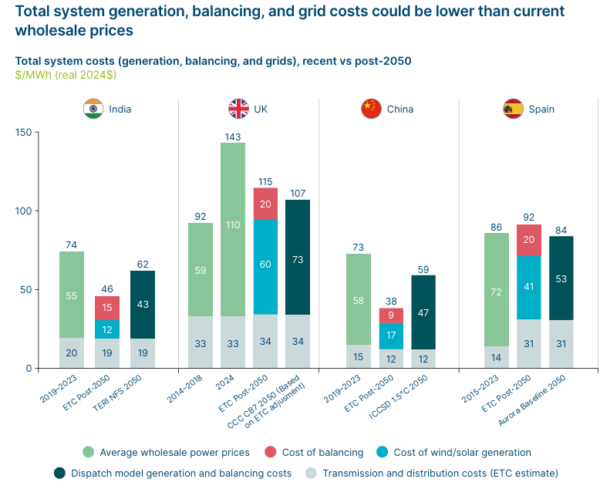
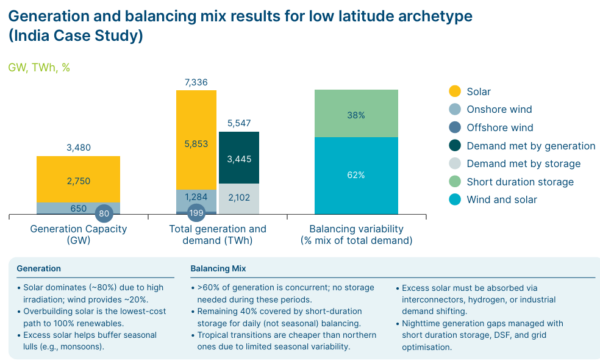
Due to the heavy reliance on solar, the report estimates that about 40% of electricity supply would need to be time-shifted using short-duration energy storage to match demand—such as powering cooling systems after sunset. “The vast majority of this balancing requirement would occur over short durations (intra-day or day-to-day), with minimal need for seasonal or multi-week balancing,” the report notes.
The study highlights India’s abundant solar potential and rapidly declining battery costs. Furthermore, as a developing economy building much of its grid infrastructure afresh, India can design systems optimized for renewables and modern technologies, avoiding many of the legacy constraints faced by developed economies.
This content is protected by copyright and may not be reused. If you want to cooperate with us and would like to reuse some of our content, please contact: editors@pv-magazine.com.
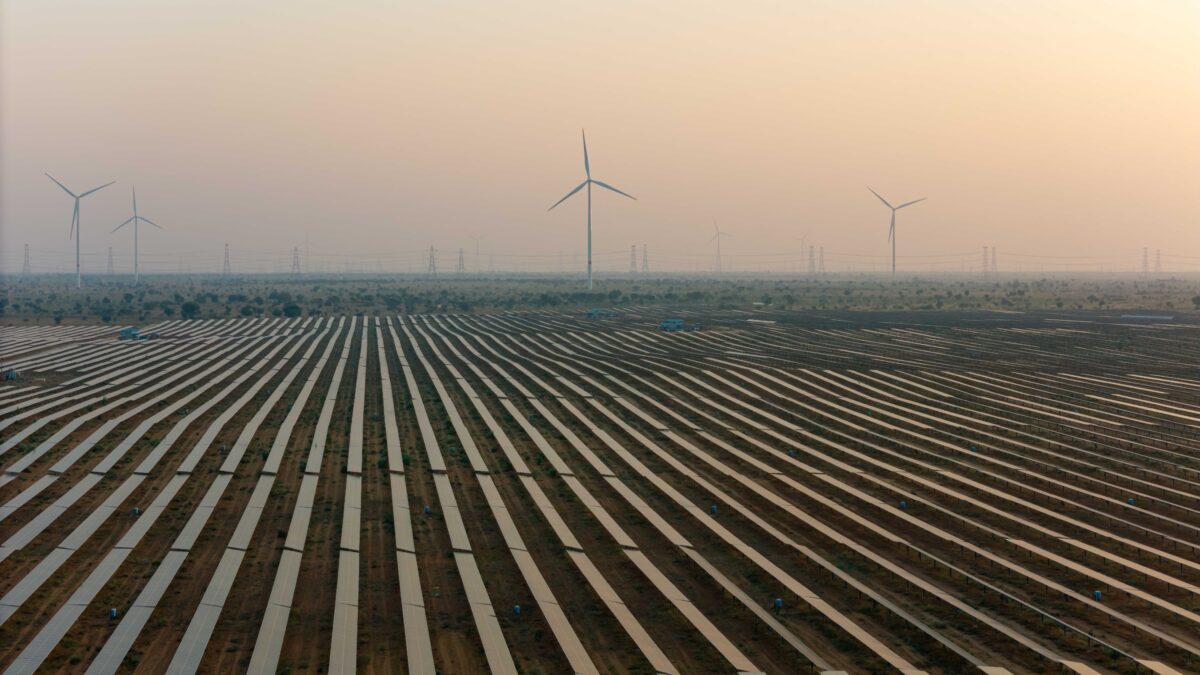
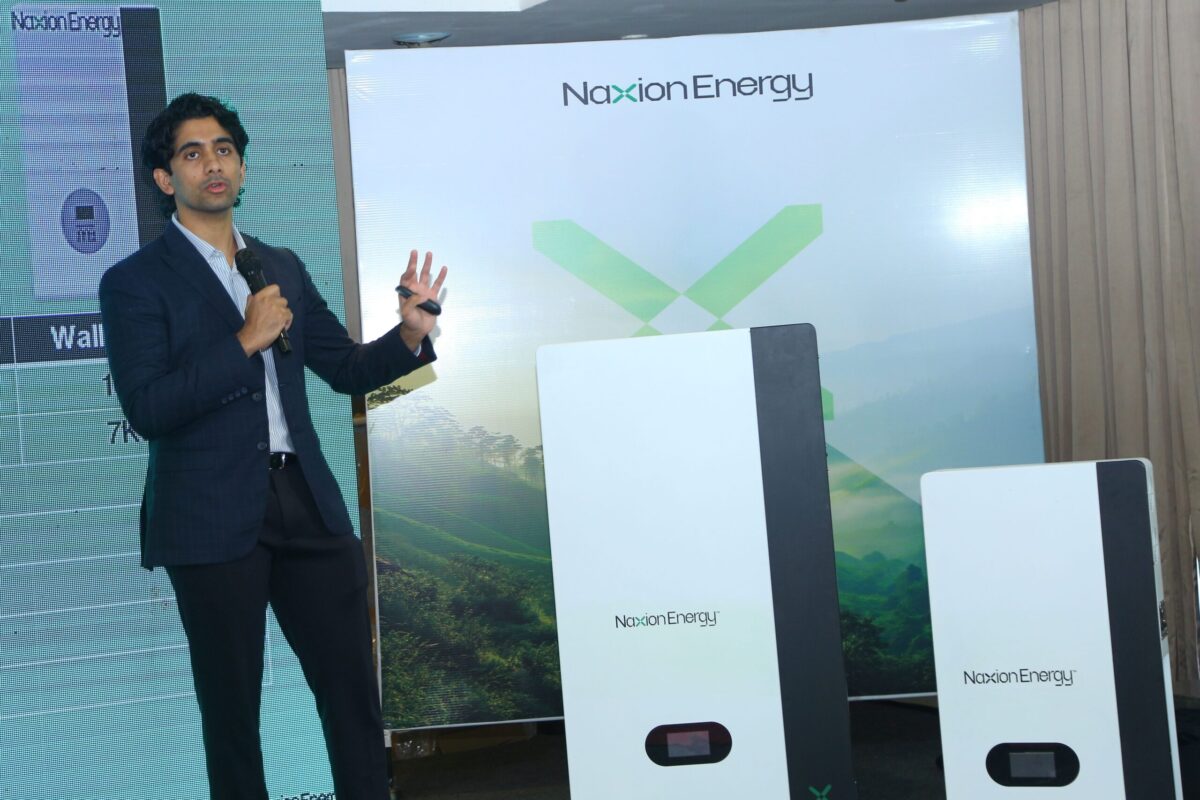


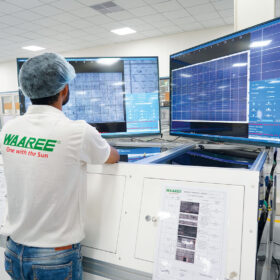

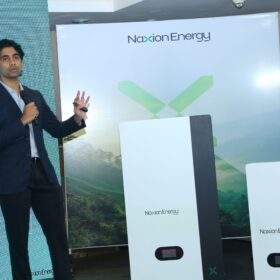


1 comment
By submitting this form you agree to pv magazine using your data for the purposes of publishing your comment.
Your personal data will only be disclosed or otherwise transmitted to third parties for the purposes of spam filtering or if this is necessary for technical maintenance of the website. Any other transfer to third parties will not take place unless this is justified on the basis of applicable data protection regulations or if pv magazine is legally obliged to do so.
You may revoke this consent at any time with effect for the future, in which case your personal data will be deleted immediately. Otherwise, your data will be deleted if pv magazine has processed your request or the purpose of data storage is fulfilled.
Further information on data privacy can be found in our Data Protection Policy.